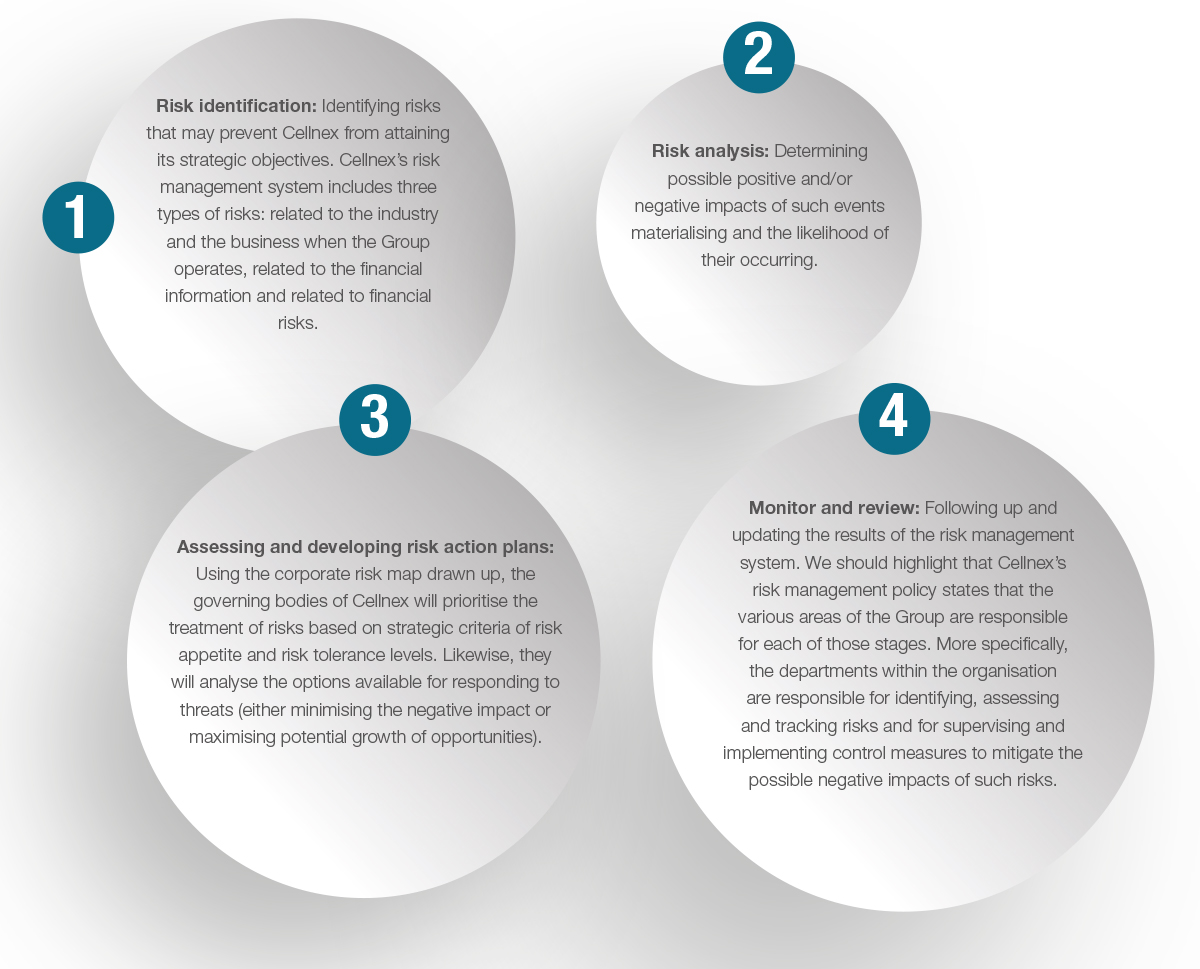Risk management
The Cellnex risk management model is formalised in a risk management policy approved and overseen by the Audit and Control Committee. This model is embodied in a comprehensive risk management system that allows risks to be managed in a logical and structured way while facilitating effective and efficient decision-making. The main stages in risk management include: risk identification, risk analysis, assessing and developing risk action plans and monitor an review.
Cellnex’s integrated risk management model involves the Steering Committee developing and monitoring a risk map while the Audit and Control Committee oversees its development. In 2018, the Board of Directors examined the Risk Maps of the various countries. When a new company joins the group, there is a prudential period of consolidation from which time the risks are analysed and the Code of Ethics disseminated.
It is important to note here that in 2018 Cellnex Switzerland adopted the Cellnex Group risk management model and set out a Risk Map and Action Plan using the same typology and methodology as the rest of the Group. Likewise, maintaining the objective of homogenising risk management, in 2019 the risk maps that exist in the different companies of Cellnex Italy and the Netherlands will be merged so that there is a single map of risks by geographical area.
In this regard, we should underline that the management team and the governing bodies of Cellnex are aware that creating value for the organisation is directly linked to managing risks that may jeopardise the sustainability of its strategy.
MAIN STAGES IN RISK MANAGEMENT

The main risks that may affect the achievement of the Group’s objectives are:
CELLNEX RISK TYPOLOGY (1)
Risks related to the industry and the business in which the Group operates
- Risks related to the environment in which the Group operates and those derived from the specific nature of the Group’s businesses
- Risks of increased competition
- Risk related to a substantial portion of the revenue of the Group is derived from a small number of customers
- Risk of infrastructure sharing
- The expansion or development of the Group’s businesses, through acquisitions or other growth opportunities, involve a series of risks and uncertainties that could adversely affect operating results or interrupt operations
- Operational risks
- Risks about the conservation of land entitlements where the Group’s infrastructures are located
- Risks inherent to the businesses acquired and international expansion of the Group
- Risk associated to significant agreements signed by the Group that can be modified by change of control clauses
- Risk related to the “non-control” of certain subsidiaries
- Risks related to the execution of Cellnex’s acquisition strategy
- Regulatory and other similar risks
- Litigation
- Risk related to the shareholding of the Group
Risks related to financial information
- Financial information, fraud and compliance risks
- Expected contracted revenue (backlog)
Financial risks
- Exchange rate risks
- Interest rate risk
- Credit risk
- Liquidity risks
- Inflation risk
- Risk related to the Group’s indebtedness

GRI: 102-11,102-15, 102-19,102-16, 102-20, 102-34, anti-corruption management approach (103-1, 103-2, 103-3), 205-1, 205-2, 205-3, 405-1, 407-1, 408-1, 409-1



